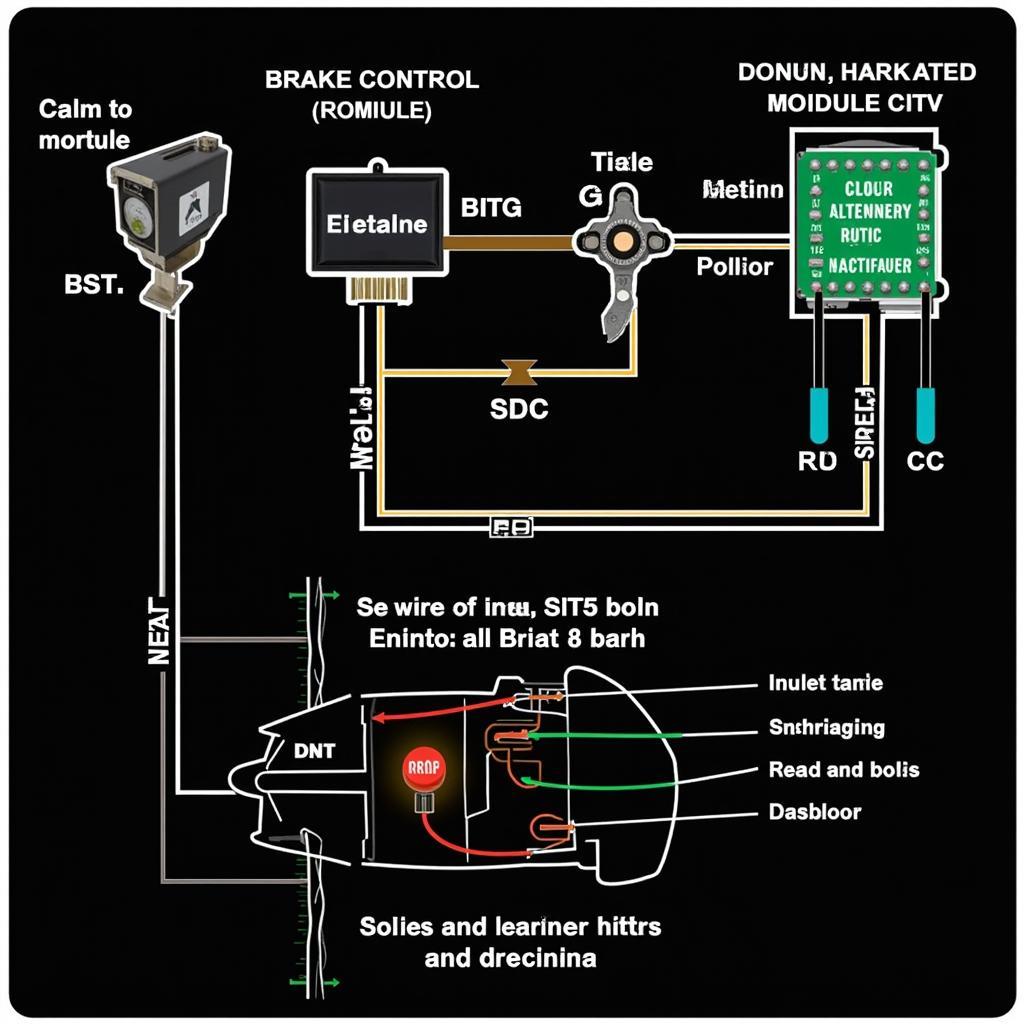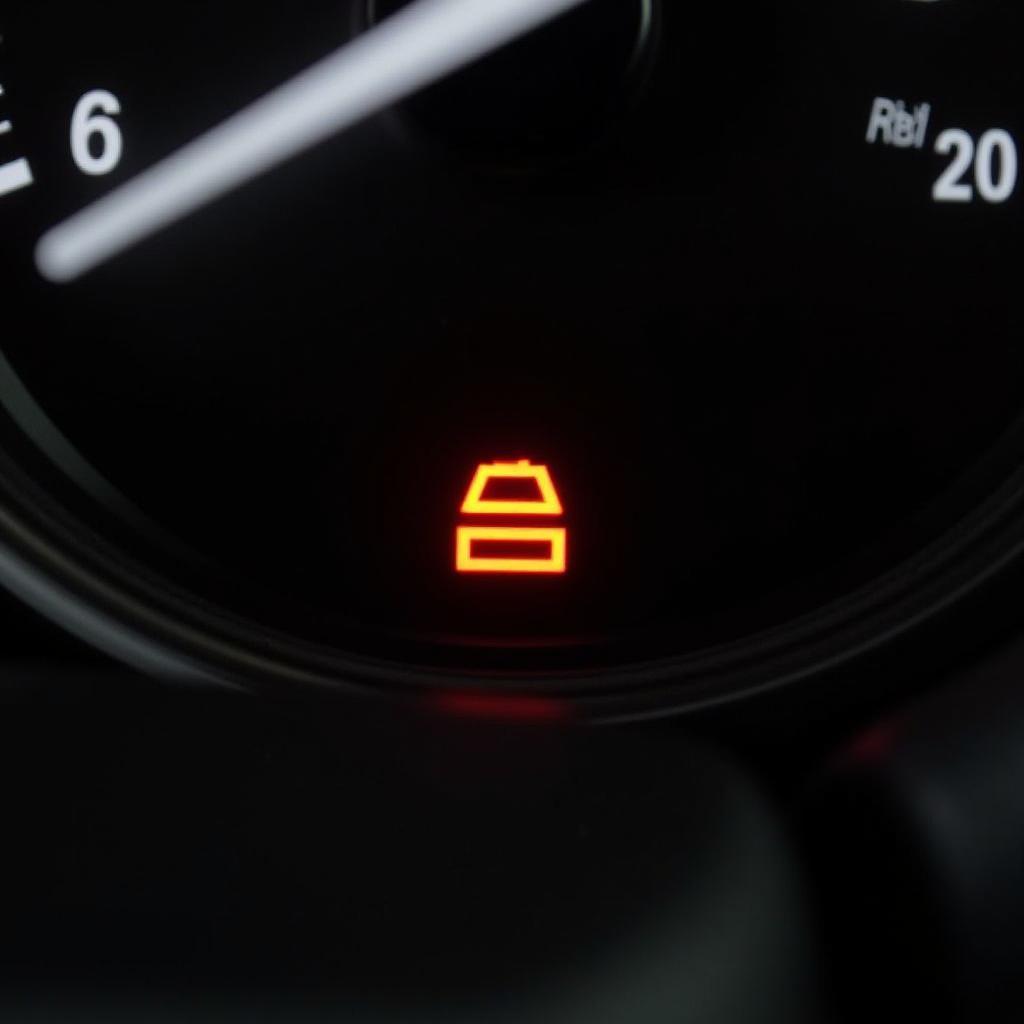The 1973 VW Beetle brake warning light is a critical safety feature, and if it illuminates, it demands immediate attention. Understanding the potential causes and how to address them is crucial for ensuring your classic Beetle remains safe and roadworthy. Let’s dive into the common culprits behind this warning light and how to troubleshoot them.
Why is My 1973 VW Beetle Brake Warning Light On?
Several reasons can cause the brake warning light to come on in your 1973 VW Beetle. These range from simple issues like low brake fluid to more complex problems such as a faulty brake pressure switch. Don’t panic! This guide will walk you through the most common causes and how to diagnose them. Knowing how to tackle this issue yourself can save you time and money. Remember, safety is paramount, so if you’re not comfortable working on your brakes, seek the help of a qualified mechanic.
Low Brake Fluid: The Most Common Culprit
Often, the simplest explanation is the correct one. Low brake fluid is the most frequent reason for the brake warning light to illuminate. Check the fluid reservoir located under the hood. If the level is low, carefully top it off with the correct type of brake fluid specified for your 1973 Beetle. If the light persists after topping off the fluid, you may have a leak in the brake system, which requires immediate professional attention. Don’t delay in addressing a brake fluid leak.
Worn Brake Pads: Another Likely Suspect
Worn brake pads are another common cause of the brake warning light activating. As brake pads wear down, they trigger a sensor that illuminates the warning light. Inspect your brake pads to see if they are worn. If they are thin or worn down to the metal, replace them immediately. See the warning switch brakes for more information.
Checking the Brake Pressure Switch
The brake pressure switch is a critical component that alerts you to potential pressure issues within the braking system. Sometimes, the switch itself can malfunction, causing the warning light to come on even when the brake fluid level and pads are fine. Testing the brake pressure switch requires some basic tools and a little know-how. If you’re not confident working with electrical components, consult a mechanic.
How to Test the Brake Pressure Switch
- Locate the brake pressure switch. It’s usually mounted near the master cylinder.
- With the ignition off, disconnect the electrical connector from the switch.
- Using a multimeter, test for continuity between the terminals of the switch. With the brake pedal released, there should be no continuity. When the pedal is pressed, there should be continuity.
- If the switch doesn’t behave as described, it’s likely faulty and needs replacement. See the 1973 vw superbeetle brake warning circuit for details.
Beyond the Basics: More Complex Issues
While low brake fluid and worn brake pads are the most common culprits, other issues can trigger the warning light. These can include problems with the master cylinder, brake lines, or wheel cylinders. Diagnosing these issues can be more challenging and may require specialized tools and expertise. If you’ve checked the basics and the light remains on, it’s essential to consult with a qualified mechanic. For more information about flashing warning lights, visit 1973 vw super beetle brake warning circuit flashing.
“A flickering brake warning light can sometimes indicate a loose connection or a failing brake pressure switch,” says automotive expert, James O’Malley. “Don’t ignore this intermittent warning, as it can quickly escalate into a more serious problem.”
Conclusion: Keeping Your 1973 VW Beetle Safe
Addressing the 1973 VW Beetle brake warning light is crucial for maintaining the safety and reliability of your classic car. By understanding the potential causes and following the troubleshooting steps outlined above, you can ensure your Beetle’s braking system is in top condition. Remember, if you encounter any issues you’re not comfortable tackling yourself, always seek the advice of a qualified mechanic. Don’t compromise on safety when it comes to your brakes.
FAQ:
- What is the most common reason for the brake warning light to come on in a 1973 VW Beetle? Low brake fluid.
- How do I check my brake fluid level? Locate the reservoir under the hood and check the fluid level against the markings.
- What should I do if my brake warning light stays on after topping off the fluid? You likely have a leak and should seek professional help.
- How can I tell if my brake pads are worn? Visually inspect them for thinness or metal-to-metal contact.
- What is the brake pressure switch, and how do I test it? It’s a sensor that detects pressure issues. Test it with a multimeter for continuity.
- What if the warning light is still on after checking the basics? Consult a mechanic as more complex problems might exist.
- Can a flashing brake warning light be serious? Yes, it could indicate a loose connection or a failing brake pressure switch.


